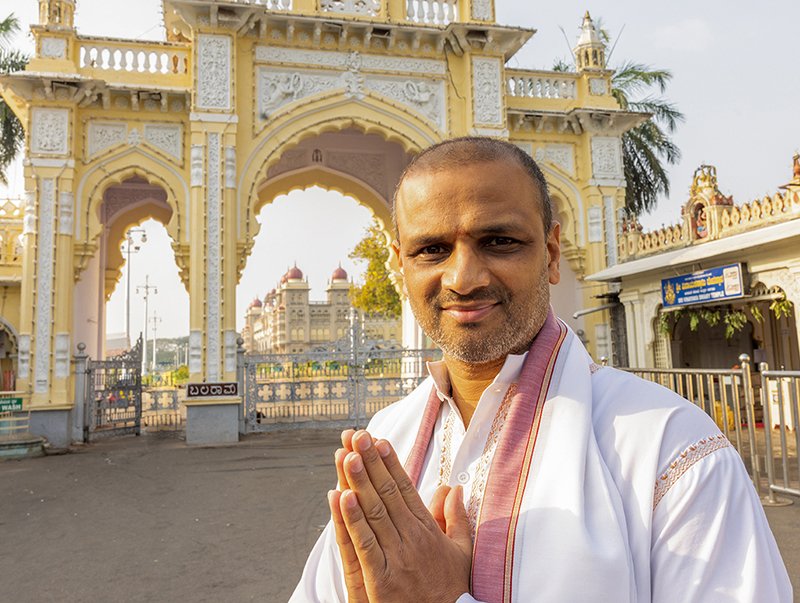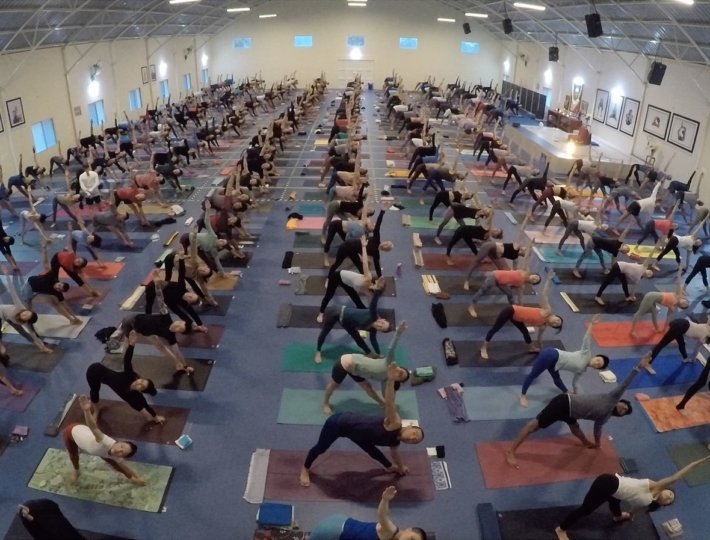I like to think that my partner and I do a decent job of staying connected, despite a combined workweek of close to 100 hours, a teenager who requires near-constant chauffeuring far and wide, and the fact that dirty dishes seem to accumulate in our kitchen sink of their own accord, like bunnies reproducing. But I do notice that, when we go a week or two (or three, when it gets really bad) without a solid block of time together, everyday annoyances become more aggravating, and those little peeves, left unresolved, can grow into bigger ones.
We give ourselves permission (and props) for prioritizing yoga, meditation, creative expression, prayer, therapy—or whatever forms our personal quest for spiritual connection and self-knowledge might take. And we understand that most of those practices don’t have much impact when we do them in three- or four-hour blocks of time once in a long while; the key, as we’ve all heard, is creating a regular routine, building these experiences into your days and weeks in ongoing, sustainable ways.
What if we treated our romantic relationships like a yoga or meditation practice—setting aside some time every day, or every couple of days, to nurture that living entity that we’ve created with our significant other, instead of waiting for a monthly date night or an annual vacation, or even just for the weekend? If only five minutes of yoga or meditation a day can make us feel better, could five minutes of connecting with our partner daily make our relationship better?
John Grey, Ph.D. (not to be confused with the John Gray of Mars and Venus fame) and Susan Campbell, Ph.D., coauthors of the new book, Five-Minute Relationship Repair, believe regular relationship maintenance is the way to go. “The most powerful things we can do every day to keep a relationship filled with love and shared joy are small,” Grey says. “Knowing that and doing these things is what happy couples instinctively do.”
Grey and Campbell offered these six practices for cultivating a happy, healthy relationship.
Align your nervous systems. One of the easiest and quickest relationship fixes might have the greatest benefits, from the neuroscientific and physiological points of view. Body-to-body contact, for as few as three to five minutes, produces what’s known as “co-regulation” or “interactive regulation” between two people—a state in which your nervous systems are aligned and relaxed, your brains are regulated, your energy is recharged, and you feel a sense of deep, body-based connection. In other words, a long hug with your partner can have many of the same positive effects as yoga, meditation, or pranayama.
“It’s very similar to yoga in that you’re using the body first to change the state of your mind and heart,” Grey says. “Our body-based, nervous system states are what drive our emotional and psychological states. So physical, supportive touch can be far more powerful than trying to discuss and resolve an issue with words.” (He cites a functional MRI study by University of Virginia researcher James Coan that emphasizes the mind-body-relationship connection: 16 happily married women subjected to mild electric shocks showed much less threat-related brain activity when their husbands were holding their hands, as opposed to when they were holding the hand of a male stranger, or no hand at all.) Practice co-regulating by hugging, holding each other, or spooning for several focused moments, four or five times a day.
Look into each other’s eyes. Sit facing each other in a comfortable position, take a moment to get centered, and then spend about five minutes or so simply gazing into each other’s eyes. “This practice can tune you into a much deeper level of your partner,” Campbell says. “You come to see the other person as a being that is bigger than just their personality, and vice versa.” (And remember to keep your eyes on each other when you’re fighting, too; Grey says that helps prevent the brain from going into fight/flight/freeze mode.)
Clear the air daily. Start by creating a sacred space, perhaps lighting a candle or designating a particular location for the practice. Then share anything that triggered you since your last check-in—that is, any incident, however small, that brought up what Grey and Campbell refer to as your “core fears,” your deepest underlying vulnerabilities and insecurities, whose source often dates back to childhood.
“Even in the best relationships, people are out of sync sometimes, with different opinions and needs,” Grey says. “I recommend you sweat the small stuff—it’s a lot easier to work with than the big stuff.” He likens it to stopping to shake a pebble out of your shoe, instead of forging on and ignoring the discomfort until the pebble grows into an intolerable boulder. Even if not much is going on, checking in regularly reinvigorates your sense of connection, he says. And it will, with any luck, culminate in an exchange of affirming, positive statements about each other and your relationship.
Share positive emotions and experiences. Make a point of going to your favorite spot to see the sun set, or watching the kids’ soccer game—anything you both love to do—and be aware of connecting with each other while you’re doing it, holding hands and appreciating each other’s enjoyment.
Flip the script. Every time you find yourself complaining, see if you can change your complaint into a want. So, for example, Campbell explains, instead of saying, “Why don’t we ever go out?,” tell your partner you’d love a night on the town. If your partner is the one kvetching, Campbell suggests this gentle response: “Honey, is there a want under that?”
When necessary, repair the rifts. In their book, Grey and Campbell offer a step-by-step guide, including a fill-in-the-blank script, for cutting straight to the chase to resolve a conflict. In a nutshell, it involves copping to the core fears that have been triggered by your partner’s actions and reframing your reaction, using the words you wish you’d been able to say in the heat of the moment. You might have to do this every day if you’re in a relationship crisis, or once in a while if you’ve been keeping up with your daily practices. “In real estate, it’s location, location, location; in relationships, it’s repair, repair, repair,” Grey says.
As with a yoga or meditation practice, treating relationship as a practice takes conscious commitment, discipline, and effort—particularly if you and your partner are working to rebuild your relationship after a challenging or distant period. Stay with it. “In my hatha yoga practice, if I’m holding a pose and there’s an uncomfortable moment, I don’t jam myself through it,” Campbell says. “I feel into the discomfort without resisting.”
Some of the practices she and Grey suggest might make you feel self-conscious or silly; as a Gen X’er, I have an inherent resistance to anything that seems contrived or cheesy. But Campbell stresses that “you can’t solve the problem on the level of the problem”; using a script or a prescribed practice helps you break out of your usual patterns of thought and communication. Remember, Downward Dog didn’t feel natural the first time you did it. And, even if you’ve flowed through thousands of vinyasas or spent hundreds of hours meditating, there’s always something new to discover when you bring awareness to the practice.









Comments (0)